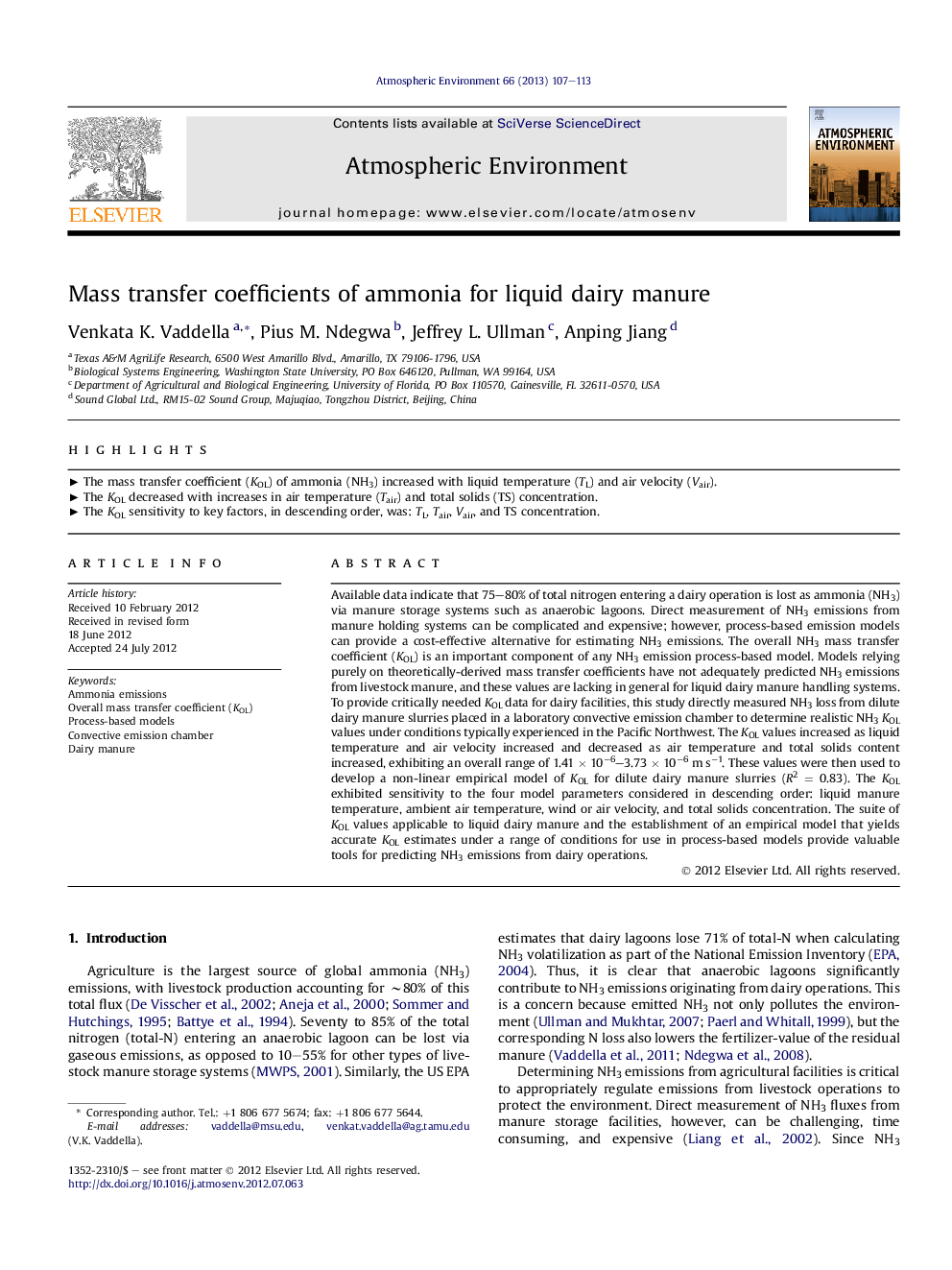| Article ID | Journal | Published Year | Pages | File Type |
|---|---|---|---|---|
| 4438407 | Atmospheric Environment | 2013 | 7 Pages |
Available data indicate that 75–80% of total nitrogen entering a dairy operation is lost as ammonia (NH3) via manure storage systems such as anaerobic lagoons. Direct measurement of NH3 emissions from manure holding systems can be complicated and expensive; however, process-based emission models can provide a cost-effective alternative for estimating NH3 emissions. The overall NH3 mass transfer coefficient (KOL) is an important component of any NH3 emission process-based model. Models relying purely on theoretically-derived mass transfer coefficients have not adequately predicted NH3 emissions from livestock manure, and these values are lacking in general for liquid dairy manure handling systems. To provide critically needed KOL data for dairy facilities, this study directly measured NH3 loss from dilute dairy manure slurries placed in a laboratory convective emission chamber to determine realistic NH3KOL values under conditions typically experienced in the Pacific Northwest. The KOL values increased as liquid temperature and air velocity increased and decreased as air temperature and total solids content increased, exhibiting an overall range of 1.41 × 10−6–3.73 × 10−6 m s−1. These values were then used to develop a non-linear empirical model of KOL for dilute dairy manure slurries (R2 = 0.83). The KOL exhibited sensitivity to the four model parameters considered in descending order: liquid manure temperature, ambient air temperature, wind or air velocity, and total solids concentration. The suite of KOL values applicable to liquid dairy manure and the establishment of an empirical model that yields accurate KOL estimates under a range of conditions for use in process-based models provide valuable tools for predicting NH3 emissions from dairy operations.
► The mass transfer coefficient (KOL) of ammonia (NH3) increased with liquid temperature (TL) and air velocity (Vair). ► The KOL decreased with increases in air temperature (Tair) and total solids (TS) concentration. ► The KOL sensitivity to key factors, in descending order, was: TL, Tair, Vair, and TS concentration.
